AUGUST 2019 ENEWS
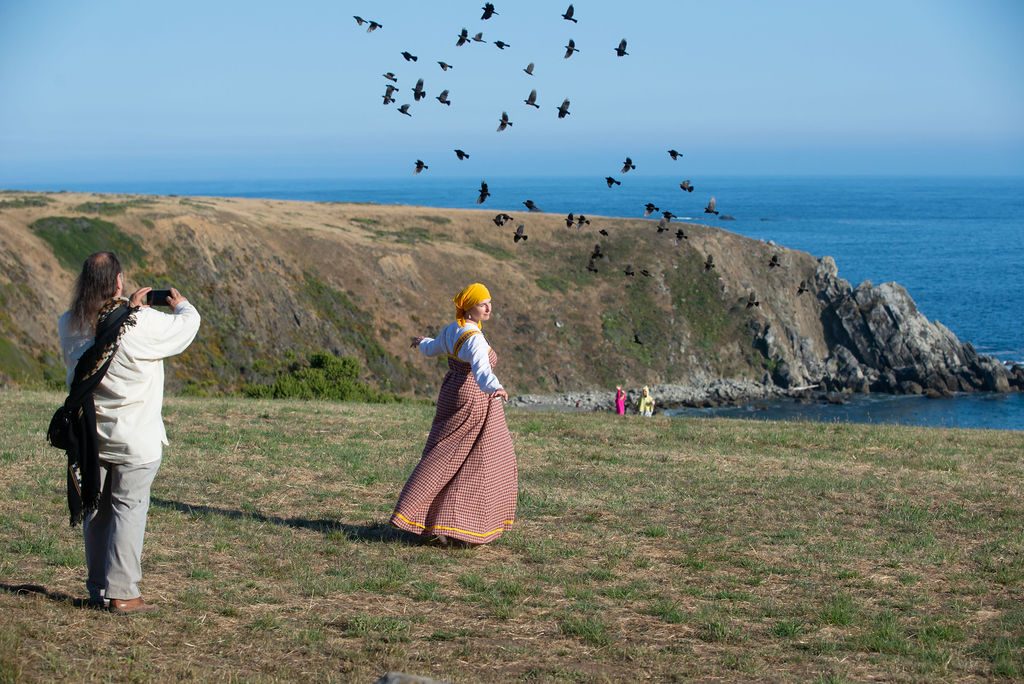
Dear friends of Salt Point and Fort Ross,
It’s been a glorious summer and I hope you’ve spent much of it outside. While the coastal weather has been unusual - rain in August is definitely global weirding - it’s made for some stunning days. The wildflowers had a great run this season and the fruit on the orchard trees are in overdrive.
We want to thank everyone who volunteered, donated to, performed, worked, interpreted, or just enjoyed Fort Ross Festival this year. It was a great day! Hat’s off to Melissa Bushner who coordinated over 250 volunteers, and to the hard working, behind the scenes FRC and State Parks staff. And kudos to Fort Ross Ventures for sponsoring. We’ve posted some lovely Fort Ross Festival photos online so you to relive the day. Every year we take stock of what worked and what needs improving, and we can definitely report that serving kvass in the Beer Garden was a big hit! Kvass will be back come 2020, and we are working to bring some international performers to next year’s event. If you have suggestions for Festival, send us an email.
We also took the opportunity to award Susan Zerwick and Aaron Haiman with our Volunteer of the Year award. Volunteers keep our parks humming, and Susan and Aaron exceeded our expectations! Thank you both for all you do!
Next up is Harvest Festival, the quieter, more contemplative sibling to Fort Ross Festival. At Harvest we focus our energies upslope in the orchard where we will have pumpkin carving, kids’ crafts, apple and pear picking, and the lovely voices of the Kedry families providing Russian songs to celebrate the season. We don’t usually have food vendors at Harvest, so pack a lunch, or reserve a spot at the Harvest Luncheon, a fundraiser for Fort Ross Conservancy and a mighty enjoyable way to spend an afternoon. Lunch will be served family style in the orchard and the seasonal menu and wine pairing is sure to impress. Advanced purchase is required; the luncheon price is $100 with $50 of each ticket going to the Fort Ross Education Fund to ensure all students have access to quality outdoor education. Please email Sarjan Holt at sarjanh@fortross.org or call the Fort Ross Conservancy office at 707/847-3437 to book your seat at the table.
But let’s not get too far ahead of ourselves - it’s still summer, kids are not yet back to school, and there’s time left before we contemplate a change in the seasons. Pack a lunch, a good book and a beach towel, and find yourself a spot where nature, not humans, has the run of things. A little lazy can be a wondrously regenerative thing. Let’s enjoy it while we can.
Hope to see you on the Sonoma Coast,
Sarah
sarahs@fortross.org
California Coastal Cleanup Day at Fort Ross September 21, 2019 9:30AM - 1PM
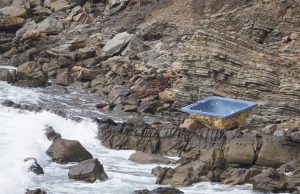
Camping available at Woodside Campground/ Salt Point State Park, Friday, Sept 20 & Saturday, Sept 21
Register ahead of time to camp!
Join Fort Ross Conservancy, California State Parks Foundation’s Park Champions, and the California Coastal Commission in the statewide movement, Coastal Cleanup Day! Last winter the Russian River flooded, washing up trash, tires, and even a hot tub on our stretch of coastline! Let’s work together to clean this up and get our beaches back to the pristine state they should be.
Bring: layers, sturdy shoes (you’ll be scrambling up and down rocks to get down to the beach), water, lunch, a hat, your camera. All ages welcome!
We will provide: Contractor bags for the trash, gloves, trash pongs, light refreshments in the morning.
Register for the day with Coastwalk here
Register with Coastwalk AND Park Champions if you’d like to camp!
Park Champion here
Meet at the Visitor Center at 9:30AM
Fort Ross Conservancy
19005 Coast Highway One
Jenner, CA 95450
Eve, the ROV
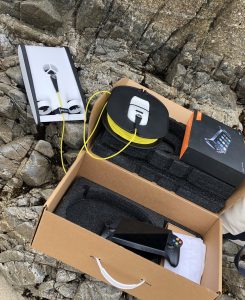
In June of 2018, the Sonoma MPA Collaborative was fortunate to be awarded two Trident Mini-ROVs through the S.E.E Initiative in partnership with SoFar Ocean Technologies, National Geographic and the MPA Collaborative Network. ROV stands for Remotely Operated Vehicle, otherwise known as an underwater drone. The Trident is a compact, streamline, underwater mini-ROV made by SoFar Ocean. As a member of the Sonoma MPA Collaborative, Fort Ross Conservancy (FRC) is thrilled to be a part of the statewide MPA Collaborative Network ROV pilot program, collecting initial data on the use of these drones within MPAs or any marine environment where we can safely collect data on the health of our local marine habitats.
Our oceans have many jurisdictions, and management can get a little complicated.
“California’s MPAs are managed through the MPA Management Program. The MPA Management Program is a collaboration between the California Department of Fish and Wildlife, the California Ocean Protection Council, the California Fish and Game Commission, and the MPA Statewide Leadership Team (MSLT)- of which the MPA Collaborative Network is a member.” - MPA Collaborative Network.

Over the last six months, I have been working to learn how to smoothly pilot this amazing tool. The first dive was in the pool at the Bodega Bay Marine Lab, and the second in the calm but muddy waters of the Russian River. My maiden voyage in the ocean took place recently while attending a training and MPA forum in Pacific Grove, calm conditions and an ocean as smooth as glass provided the perfect conditions for a new pilot like myself. I was able to record my first video - check it out on our YouTube channel. After working with her (yes, it’s a her) so much lately, I was compelled to finally suggest a name to the team, and we all agree it’s a perfect fit: meet Eve. Inspired by the character EVE from Pixar’s Wall-E, who was an Extraterrestrial Vegetation Evaluator - not dissimilar to how I will be working with our Eve!
FRC is co-host of Eve, the Trident with Stewards of the Coast and Redwoods as part of the Sonoma MPA Collaborative. The Bodega Bay Marine Laboratory hosts the second Trident that will be monitoring eelgrass in Bodega Bay as well as working to retrieve lost fishing gear.
In order for each Collaborative to receive their Trident, we had to set up an Expedition on National Geographic’s Open Explorer, a digital field journal platform. Follow the Sonoma MPA Collaborative expeditions here.
FRC will be taking Eve out with students during Marine Ecology Programs to conduct surveys for our Open Explorer Expedition: Sea Stars, Urchins, & Kelp Forests at Fort Ross and Salt Point State Parks. To read more about the dramatic imbalance we have between these species along our coast, check out my: article Searching for Balance in an Underwater World Gone Upside Down. I encourage everyone to join Nat Geo and follow all three of these Expeditions on Open Explorer. Having 25 followers was one of the stipulations for the grant, so any support in this would be deeply appreciated! Plus, you’re sure to see some amazing footage captured by Eve, like this gorgeous blue fish!
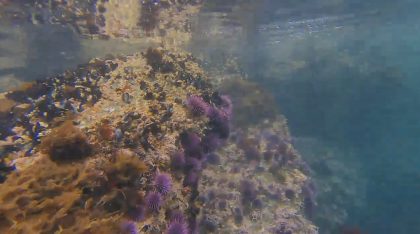 One of the most important pieces of the Mini-ROV Program will be for all of us to collect data during each dive and send it to the MPA Collaborative Network. “Since mini-ROVs are being tested by Collaboratives across the state, under different environmental conditions, and for a variety of different purposes, we hope to use the MPA Collaborative Network as a testing platform for what Tridents can, and can’t be used for. It will also be important to understand the potential impacts this emerging technology may have.” - MPA Collaborative Network.
One of the most important pieces of the Mini-ROV Program will be for all of us to collect data during each dive and send it to the MPA Collaborative Network. “Since mini-ROVs are being tested by Collaboratives across the state, under different environmental conditions, and for a variety of different purposes, we hope to use the MPA Collaborative Network as a testing platform for what Tridents can, and can’t be used for. It will also be important to understand the potential impacts this emerging technology may have.” - MPA Collaborative Network.
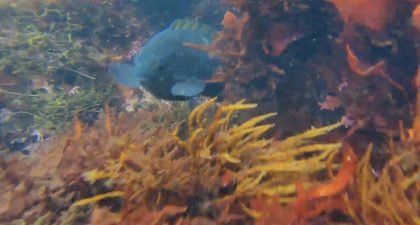
There are no current regulations restricting the use of mini-ROVs or underwater drones in MPAs. However, as good ocean stewards responsibly piloting a new technology, we will be documenting any disturbance we cause or observe while out, either from our Trident or otherwise. If piloted with care, caution, and respect, an underwater drone is thought to be no more impactful than a single SCUBA diver in the water. We will be able to see into this underwater world like we’ve never done before and get a first hand view into the magical, subtidal habitat of the rocky intertidal zone.
Stay tuned for more!
--Song K Hunter, Director of Programs
Fort Ross Donor Benches
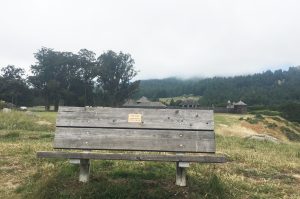
We have three benches left!
Would you like to have a personalized bench plaque at Fort Ross? Fort Ross Conservancy now offers a limited number of customized donor bench plaques at Fort Ross State Historic Park. Funding from the Donor Bench Program will help FRC continue our work connecting people to the history and beauty at Fort Ross and Salt Point.
Whether you select a bench location with a view of the Pacific Ocean or one nestled quietly in the trees, your personalized bench will provide years of recognition of the important people or occasions in your life. All details on our website at https://www.fortross.org/donate/donor-benches
Everything’s Better with Butter: Historic Dairy Farming at Fort Ross
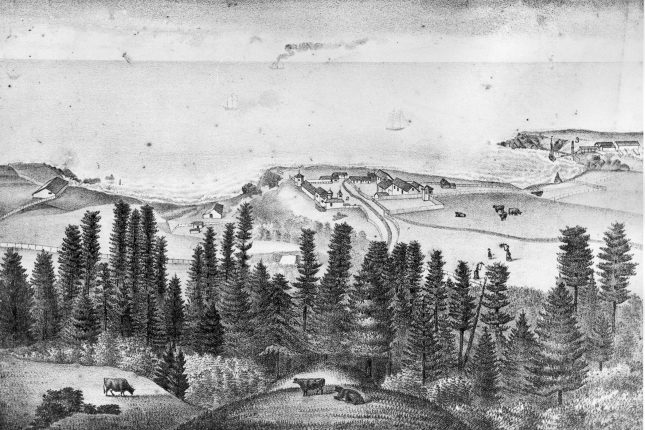
August is here and it’s time to churn out a fresh article for the Fort Ross Conservancy monthly enews! Sonoma County is no stranger to dairy farming. Local dairy companies have been carrying on with the tradition of livestock raising to produce the products we can’t get enough of, such as milk, ice cream, and butter, of course! Once upon a time during the Fort Ross Ranch era, the Call Family had their own dairy operation, and it was quite the bustling butter business.
Although George W. Call (1829-1907) owned and managed the Fort Ross Ranch, he himself was not a rancher. He was a businessman, generally seen in his three-piece suit and bowler hat. George W. employed workmen to carry out the intensive daily labor that the Ranch required. This included a foreman, buttermaker, and four to five milkers--the number of milkers depended on the number of cattle. The milkers were usually single Italian Swiss men who didn’t have their own wives to cook for them. Instead they had a designated dining room in the Call’s family home. All their daily meals were provided to them by the cook who must have worked tirelessly in the Call family’s employ.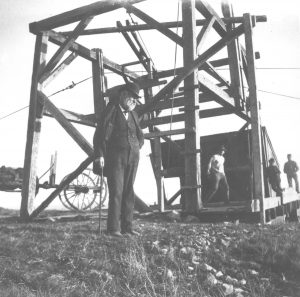
Dairy operations ran like clockwork, starting at 3 AM and ending at 7 PM day in and day out. Each milker had about 25 cows they were responsible for, and they had a clever way of moving seamlessly from one cow to the next. The milkers’ stool only had one leg, and it was secured to the body with a leather belt. When one cow was finished, the milker simply stood up with his stool strapped in place, walked over with his bucket and sat down at the next cow. Milking was quite the balancing act!
The Fort Ross dairy was a well thought out and well-rounded operation, with many cattle, horses and hogs. Barbara Mercedes Black (1918-2015), granddaughter to George W. and Mercedes Call, provides us with a thorough account of the dairy with her book, Fort Ross Creamery. Black describes the dairy’s daily inner workings and seasonal processes, including caring for the livestock, managing the pasture, producing hay for winter feeding, milking, processing the milk for butter, feeding the hogs, sterilizing the equipment, readying the butter for shipment and more. Some butter was sold locally but the big market was San Francisco. The Call dairy shipped an average of 20,000 lbs of butter, by schooner, from Fort Ross harbor to the city every year!
 Much of Fort Ross dairy’s infrastructure has long since been torn down and those that remain have been weathered by time and the moist, salty coastal air. However, the Call family home, a remnant of this chapter in Fort Ross’ history, still stands tall. You can take a tour of the Call House during the first full weekend of every month. A tour allows visitors to walk through the workmen’s dining room, and the kitchen which houses butter churns and historic records of the dairy.
Much of Fort Ross dairy’s infrastructure has long since been torn down and those that remain have been weathered by time and the moist, salty coastal air. However, the Call family home, a remnant of this chapter in Fort Ross’ history, still stands tall. You can take a tour of the Call House during the first full weekend of every month. A tour allows visitors to walk through the workmen’s dining room, and the kitchen which houses butter churns and historic records of the dairy.
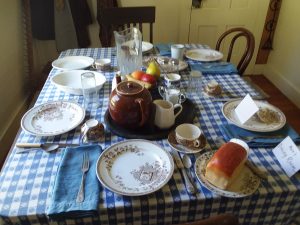
The long tradition of butter making still takes place at Fort Ross State Park when school kids participate in Fort Ross Conservancy’s Environmental Living Program by role-playing settlement life at Fort Ross. If you visit the park, you might observe the kids vigorously churning away to make fresh butter for their dinner. After all everything is better with butter!
References & Recommendations (All book titles are available at the Fort Ross State Park Visitor Center Bookshop!):
Call House Virtual Tour with Lynn Rudy
Fort Ross Creamery, by Barbara Mercedes Black.
The Fort Ross Ranch Era
The Old Salt Point Township and The Old Salt Point Township II: Ranch Era Settlers by local author, historian and Call House Volunteer Lynn Hay Rudy
--Charon Vilnai, Programs Instructor, Sea Lion Survey Project Lead, and Call House Museum Lead
Notes Behind the Counter
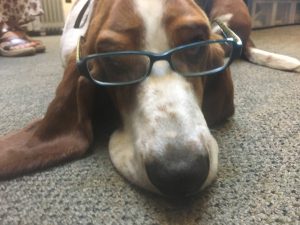
Today was another summer day of interesting visitors to the Fort Ross Bookshop, most of whom had traveled from quite a distance away. Due to the absence of school-age children in the Bookshop, I suspect that families are staying close to home preparing for the new school year. So today our visitors are more generally middle aged and beyond, taking their time at a slower pace. Oriented to history and the landscape rather than popcorn and otter puppets, these folks have questions pertinent to those topics, thus our conversations are more engaging. An early visitor was a white haired gentleman with granny glasses who immediately bought a stack of postcards. We got to talking and, noticing an accent, I asked from where he hailed. Tennessee, he said, and continued to inform me that he was a recent widower after a happy marriage of over 45 years, and was on a zig zag traipse across the country, headed north to Canada where he would turn east to visit relatives in North Dakota. Decades ago in college he had minored in history and had purposely come to Fort Ross. Some hours later, after walking the fort compound, he returned to buy postcard stamps for the cards he’d bought earlier. He had found a straight branch of dead eucalyptus on the path and asked permission to take it with him as a walking aid, which was given, along with detailed directions to Highway 101 north. I was rewarded with a sincere “Thank ya, Ma’m” and a grand gesture of tipping an invisible cap as he headed out through the doors to continue his solo journey.
Meanwhile, another cluster of folks took their time perusing the display of books until they came across the bilingual Russians in California, which was brought to the counter with questions in French, then Russian, and finally, with apologies and laughter, English. This family was visiting from London, traveling south from Seattle to San Francisco.
Then there was the gruff looking but friendly fellow who docents at Sutter’s Fort, with specific questions about the cannons that were acquired from Fort Ross at its sale to John Sutter, which prompted me to refer him to our historian Glenn Farris. In return, I heard a bit of biography of John Sutter and the influx of Germans from the Odessa area of Russia to South Dakota in the 1800s, choosing that location for its promising agricultural similarities to their homeland.
Every day in the Bookshop is another opportunity to shed light on an aspect of Fort Ross history and to assist travelers with their journeying when they need it (and often they don’t know they need it yet). In exchange, I too learn history, and how much I don’t know, and I am delighted by the variety of persons and, especially, their congeniality.
--Lake Perry, Administrative Assistant
Environmental Living Program Family Camp
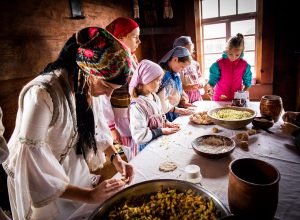
If you’ve visited Fort Ross while there’s an Environmental Living Program in full swing, you may have wished you were back in fourth grade! During the school year we welcome groups of 3rd through 5th graders to re-create the bustle of the trade settlement at Fort Ross and it’s a wonderful experience. FRC is pleased to now offer this program to families and small groups.
Picture wood smoke twisting and billowing from under cast iron pots in the outdoor kitchen, the smell of freshly baked bread wafting out of the Russian pechka, and the rhythmic clatter of butter being churned.
Down by the ocean people fish for cabezon, lingcod, and eels to prepare for dinner that night. On picnic tables, copper lanterns and Russian-inspired Khokloma lacquerware are being crafted. At night, families sleep in the historic buildings, taking turns to check the perimeter through the night, watching the crystal clear stars and drinking hot cocoa.
Does this sound like a dream adventure? Now you and your family can stay at Fort Ross by participating in our ELP extension program -- ELP Family Camp!
To learn all about this fantastic opportunity, see the poster, click on this link, or email me!
--Song K Hunter, Director of Programs
Fort Ross Festival: A Volunteer’s Point of View (& a Story of Borscht) By Margaret Herzen
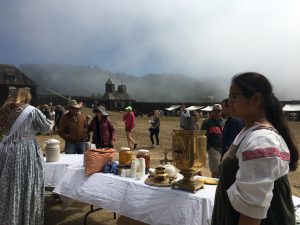
A drive up the Sonoma Coast, just past Jenner at the mouth of the Russian River stands the restored Russian Fort which has become a part of the California Historic Park’s system and also, the Environmental Living Program with hands-on learning experiences for school children. It’s truly an amazing place which comes alive when there are people visiting in period dress and contributing, each in their own way, to this Festival which takes place every year during the last weekend in July.
The Russians were present only for about 40 years on the Sonoma Coast, from 1812 to 1842. This farthest to the South Russian outpost was expensive to maintain. The Russian-American Company closed its doors and sold the fort to Mr. John Sutter.
So much for a brief history.
The day of the Festival begins with a Te Deum service in the Chapel and a procession to the Old Cemetery where Russians, Alaska Native, and Pomo and Kashaya native tribes are buried. The event hosts two Russian choirs, Russian and Native American dancers, art and craftsmen, bell ringers, tea service, food stalls and a borscht cook-off. People come from all over California and extend their visit by traveling up the gorgeous California Coast and Mendocino County.

The Borscht Cook-off peaked my interest this year. How could I not participate? Here are some of the highlights from this week-end:
The day began foggy, but it was not cold. Virtually all of the buildings are complete restorations, The one is the upper corner is the Chapel.
There were 10 people who signed up for the cook-off, but only 8 showed up. We were supposed to make 10 quarts of borscht and this is how we warmed it up. The second pot from the left is mine.
The tasters were the public at large. They purchased a $5 entry fee into the contest and received a double shot size glass with Fort Ross inscribed on it. We were supposed to fill these small mouthed glasses with a sample, which was no easy task. Here I am trying to wipe the drips and spills. I did not know any of the contestants, except for Anya. The lady to my left had a beautiful borscht—the color that I try to achieve, but this time due to a miscalculation, my borscht was more orange-red, than magenta-red.
The participants could return for as many samples as they wanted and upon making their decision, they were told to drop their wooden spoon into the glass jar corresponding to the number of each contestant who had the best borscht. My number was 7. As I was born in 1947, I figured this was a good start. She or he with the most spoons in their Mason jar was the winner.
And guess what? My reward was this interesting book on Siberian cooking written by a husband and wife team from Austin, Texas, who lived in Vladivostok and Irkutsk, teaching in the 90’s.
